Aluminum Machining – The Ultimate Guide for Beginner’s
The aluminum machining process is critical in current manufacturing, due to the light weight, strength and versatility of aluminum. You can quickly, accurately produce aerospace products or one-off consumer products when you use machined aluminum. In order to win, you must have the right insights on aluminum CNC machining- including which aluminum to machine and how to prevent tool wear as well as the accumulation of chips. Here, you will learn the basic characteristics of aluminum, premium alloys, CNC machining, tooling, prices, and so more. This article provides all that you need to improve results, minimize wastes and select a suitable machining method.
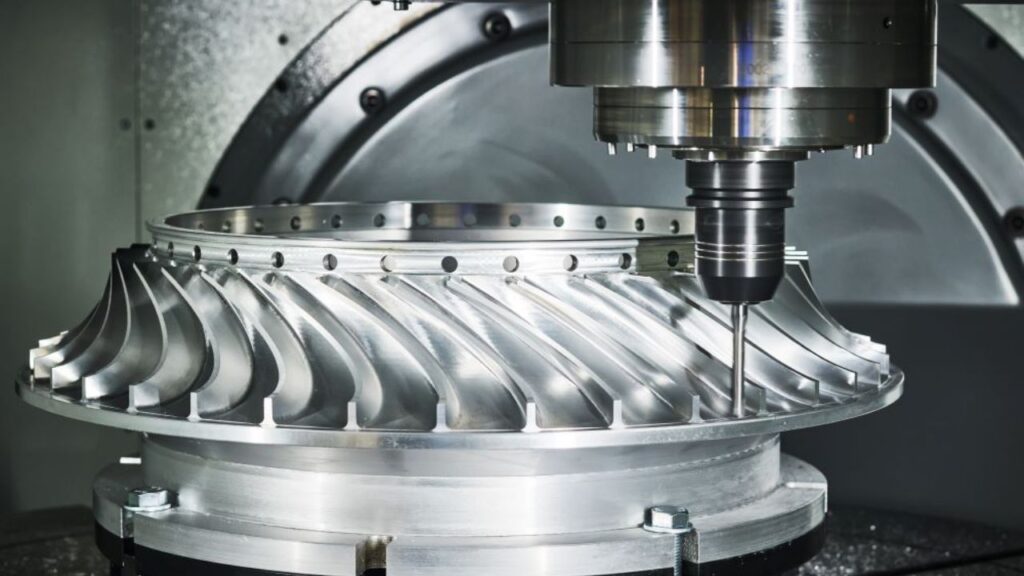
Table of Contents
ToggleAluminum Properties that Influence Machining
Machining aluminum also has its own advantages because it offers you a different set of qualities that make the process efficient and cost effective. This is what you ought to know:
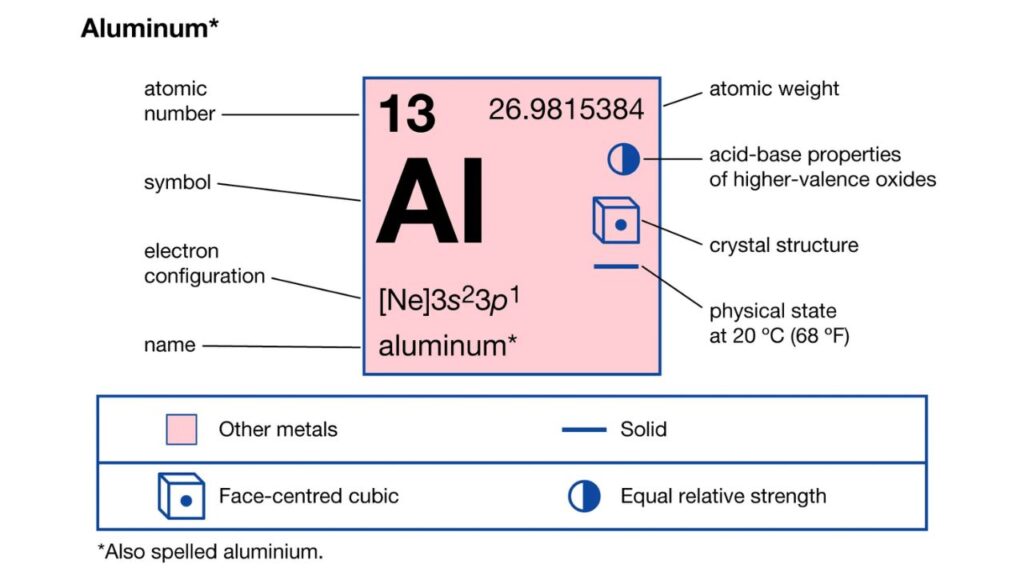
- Strength to weight ratio: Aluminum provides you with strength without the extra weight. This is essential in machining aerospace, automotive or robotics parts.
- Superb thermoelectric and electric conductivity: You obtain superior heat loss and conductivity, making aluminum suitable when it comes to electronic parts and heat sinks.
- Corrosion resistance: The majority of the aluminum grades naturally develop a protective oxide film. This keeps your parts rust free, particularly on marine or outdoors settings.
- Ductility and workability: Aluminum is easy to cut, shape and bend. This renders it ideal in CNC machining and personal fabrications.
- Grade to grade variability: Aluminum alloys are different. Others are more machineable, others stronger or more corrosion resistant. You have to align your application with the grade.
- Recyclability and eco-friendliness: Aluminum can be recycled 100 percent. By using it, you can minimize wastage and assist in the process of sustainable manufacture.
Optimum Aluminum Alloys to Machine
In wrought and heat-treatable aluminum alloys, you will get a variety of options depending on the strength, machinability and corrosion requirement. The benefits of each series vary according to the project requirement.
2xxx Series – Aluminum-Copper Alloys
They will give you high strength and good fatigue resistance so they are suitable in aerospace and defence components. They are however not corrosion resistant and may require protective coating. Hardness can make machining difficult, however, grades such as 2024 and 2011 are good.
6xxx Series – Aluminum-Magnesium-Silicon Alloys
These alloys provide you with an excellent combination of strength, weldability and corrosion resistance. They are simple to machine, and they are often found in automotive frames, support structures, and consumer products. Alloys such as 6061 and 6063 are very good in CNC and extrusion.
7xxx Series – Aluminum-Zinc Alloys
This should be your choice in case your application requires maximal strength. These grades such as 7075 and 7050 are more suitable in aircraft, robotics and sports equipment as they are more difficult to machine. Apply them under heat-treated conditions to get optimal durability.
Most Common Aluminium Alloys to Machine
The correct aluminum alloy to be used in machining involves a tradeoff between strength, corrosion resistance, weldability and machinability. To help you make up your mind, here is a brief listing of ten popular alloys.
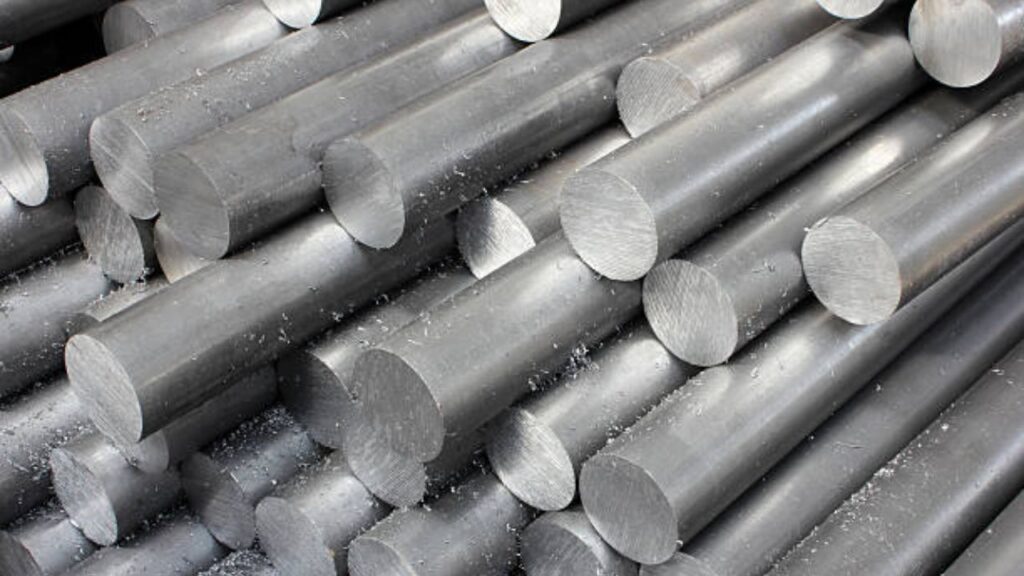
Aluminum 7075: Strength, High-Strength Variety
Aerospace parts such as wing spars are made of 7075. Its strength ~570 MPa (T6 temper) is similar to steel, but not so resistant to corrosion, requiring anodizing. Sharp tools and cooling will give you good machinability. Welds are weak because of the risk of cracking.
6061 Aluminum: Versatile Achiever
Choose 6061 on buildings or equipment. It has excellent corrosion resistance and weldability with approximately 275 MPa strength (T6 temper). T6/T651 tempers will provide you with a good machinability that is smooth finished. It can be welded easily in any method.
3003 Aluminum: Malleable and Tough
Roofing or fuel tanks: use 3003. It has low ~110 MPa strength compensated by the best corrosion resistance. Machinability is reasonable gummy chips require low speeds. It is easy to weld with little distortion.
5083 Aluminum: Marine-Ready
Choose 5083 in marines. It is ~317 MPa strength and has good corrosion resistance. Moderate machinability; tough chips should be dealt with by slow speeds. You can expect welding to be good, but not hot cracking.
2024 Aluminum:Aerospace Strength
Choose fuselage skins 2024. It is resistant to fatigue, with ~470 MPa (T3 temper) strength, but is readily corrosive, and requires coatings. Machinability is good; beware of work hardening. Cracking limits welding.
5052 Aluminum: Marine Versatility
Marine or automotive panels: use 5052. It has strength of ~210 MPa, and is resistant to corrosion. Machinability is average; sharp tools avoid gummy chips. Most methods can be used to weld it.
6063 Aluminum: Extrusion Star
Use 6063 on window frames. It is strong ~215 MPa (T6 temper) and highly resistant to corrosion, making it well suited to extrusions. Good machinability with possible gummy chips. You will find welding superb.
6082 Aluminum: Structural Precision
Choose 6082 in bridges or marine fittings. Its strength of ~310 MPa (T6 temper) and excellent resistance to corrosion are bright. You will have good machinability and welding that is slightly less than 6061.
2011 Aluminum: Ease of Machining
Select 2011 as screws or fittings. Its strength of ~300 MPa and best machinability create small chips. It is not very resistant to corrosion, coatings should be used. Cracking does not recommend welding.
7050 Aluminum: Aerospace Power
Wing spars to be of 7050. It has a tensile strength of ~510 MPa (T7451 temper) which is better than 7075 in terms of corrosion resistance. It is easily machined with strong tools. Welding is of low quality, so arrange other joining means.
Aluminum Alloy Machining Comparison Table
| Alloy | Strength (MPa) | Corrosion Resistance | Weldability | Machinability | Key Applications |
| 2011 | Moderate (~300) | Low | Poor | Outstanding | Precision components, screws, fittings |
| 2024 | Very High (~470) | Low | Limited | Fair | Aerospace, tools, automotive |
| 3003 | Low (~110) | Very High | Excellent | Fair | Tanks, ducts, roofing, siding |
| 5052 | Moderate (~210) | Very High | Good | Moderate | Marine, fuel tanks, automotive panels |
| 5083 | High (~317) | Excellent | Good | Moderate | Marine, chemical tanks, offshore platforms |
| 6061 | High (~275) | High | Excellent | Excellent | Structures, machinery, consumer products |
| 6063 | Medium (~215) | High | Excellent | Good | Architectural extrusions, piping, furniture |
| 6082 | High (~310) | High | Good | Excellent | Structural engineering, automotive, marine |
| 7050 | Very High (~510) | Low to Moderate | Poor | Good | Aerospace, high-stress components |
| 7075 | Very High (~570) | Low | Poor | Good | Aerospace, defense, racing equipment |
Aluminum Machining Methods
Milling
CNC milling is a technique that allows one to cut a complex shape in an aluminum machining process with high precision. It is advisable that you use sharp carbide or diamond-coated tools to get better surface finishes and minimize tool wear. When the settings are correct you will enjoy smooth contouring and uniform dimensions.
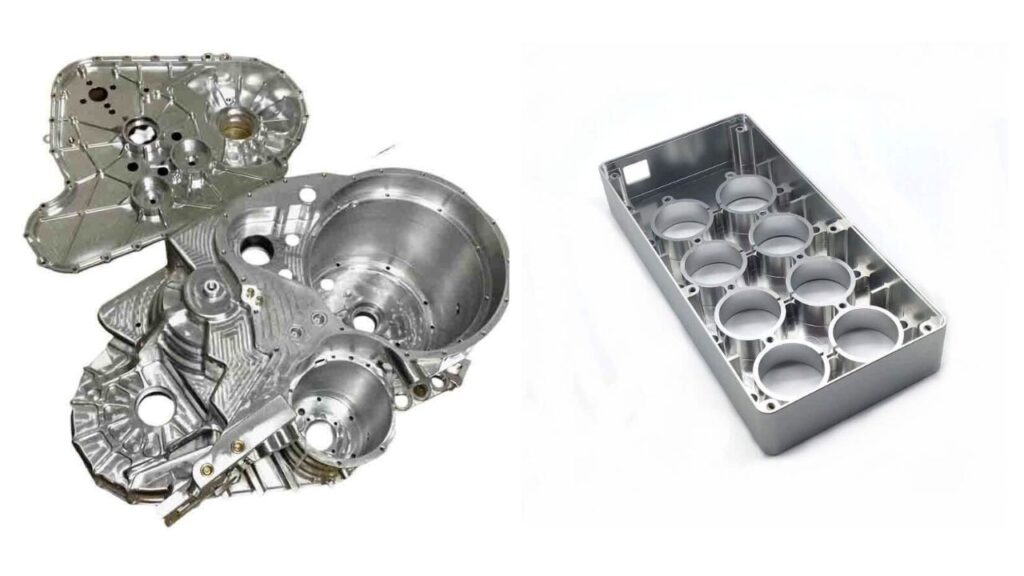
Turning
Round aluminum parts are very appropriate in high-speed CNC turning. You need to select the right tools that are geometrically correct to reduce vibration and chip accumulation. This assists you to stay precise and minimize surface flaws when in activities.
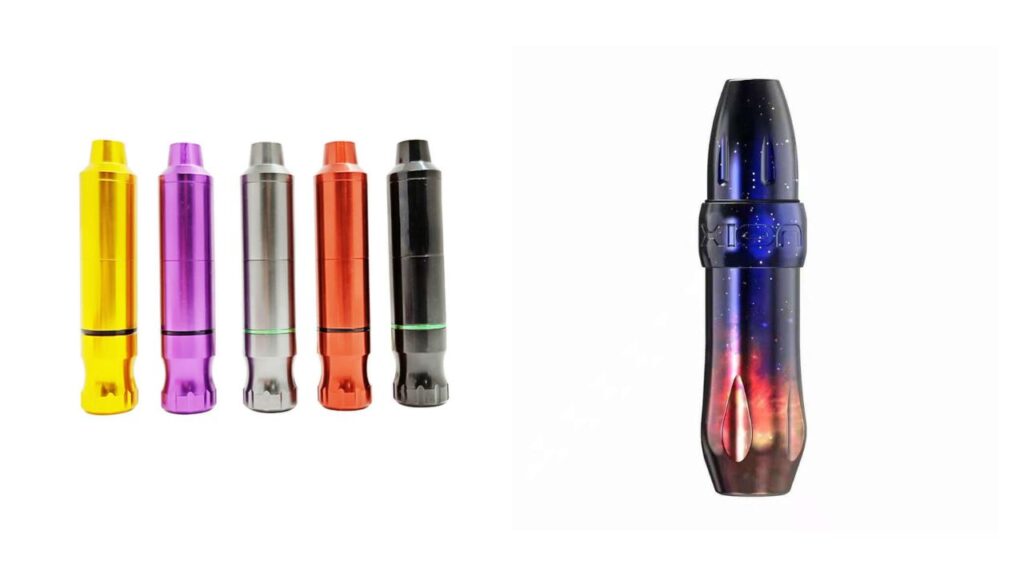
Drilling
High-speed steel or carbide drills should be used when drilling aluminum. You have to avoid chip welding through proper lubrication and minimized heat. This prevents deformation and makes holes clean and precise each time.
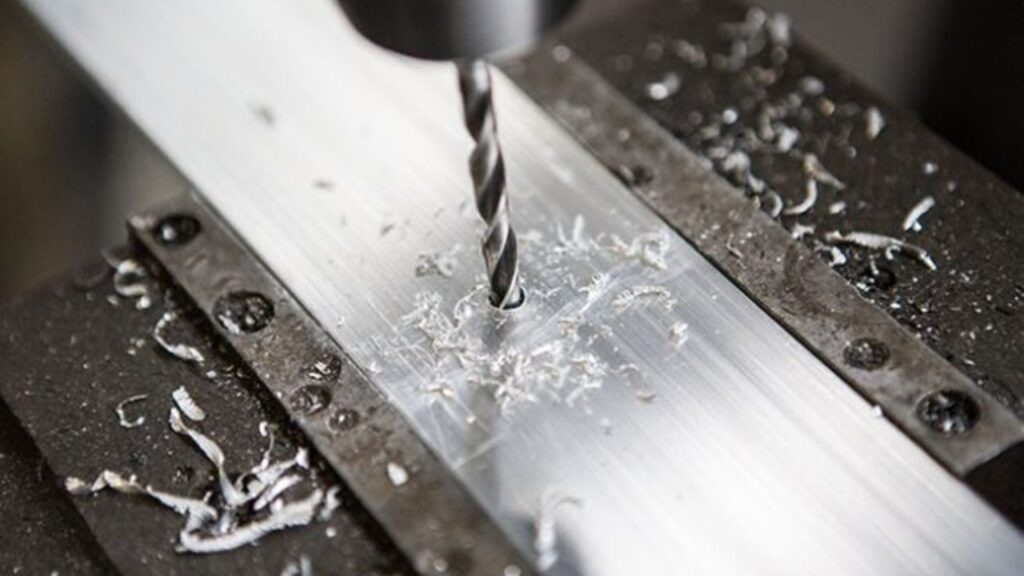
Tapping and Threading
Aluminum is soft, so it requires delicate threading. Form taps may be used on cleaner threads or cut taps on deeper ones. Lubrication should always be used to prevent stripped or damaged threads.
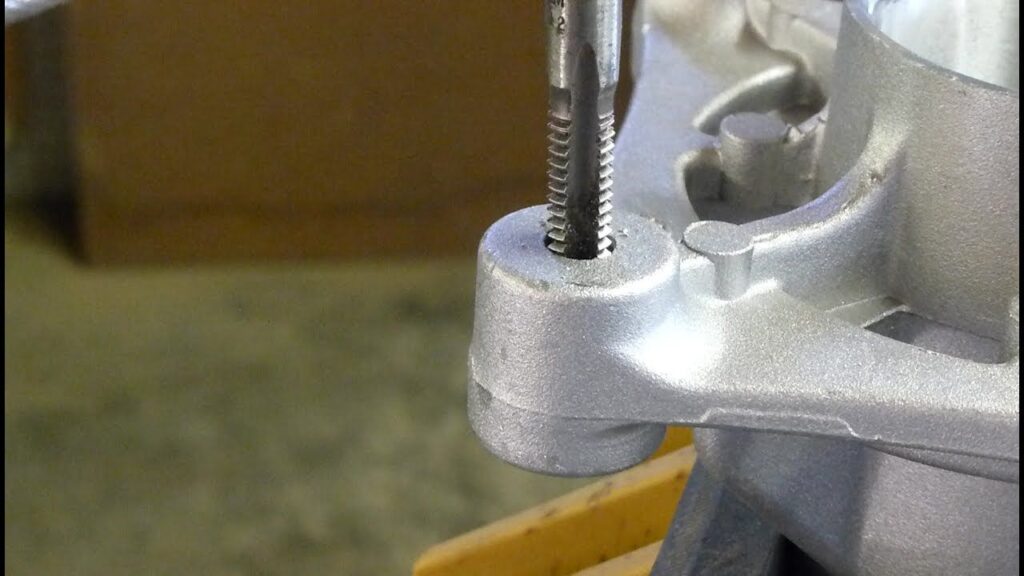
Sawing and Cutting
Cutting aluminum cleanly should be done with fine-tooth carbide blades. Coolant should always be applied to avoid heat accumulation. This will prevent burrs and will give a smoother edge finish.
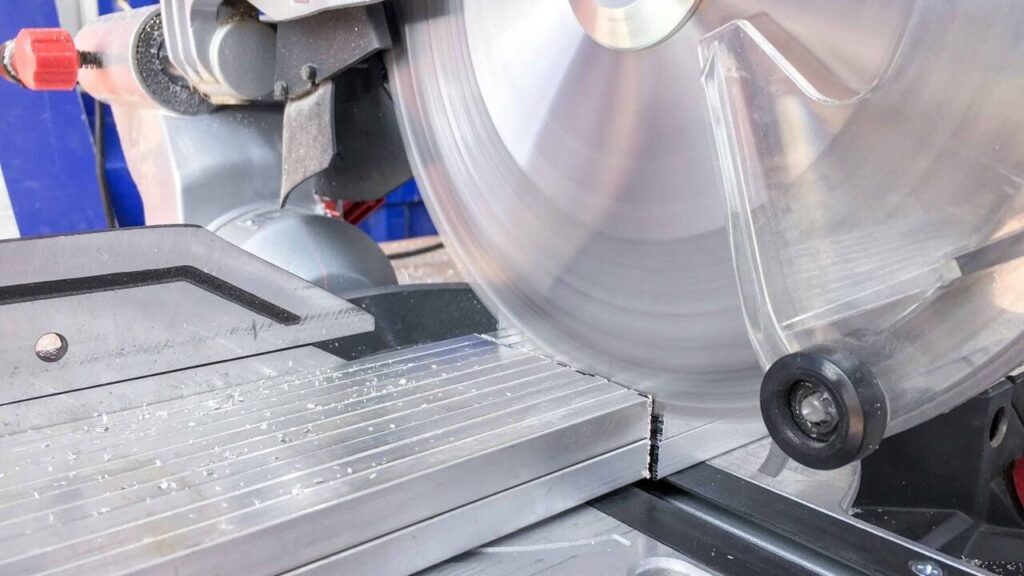
Grinding and Polishing
With precise grinding, you will get ultra-smooth finishes. Apply to critical aerospace and electronics. Good technique will tell you a mirror-like finish with little flaws.
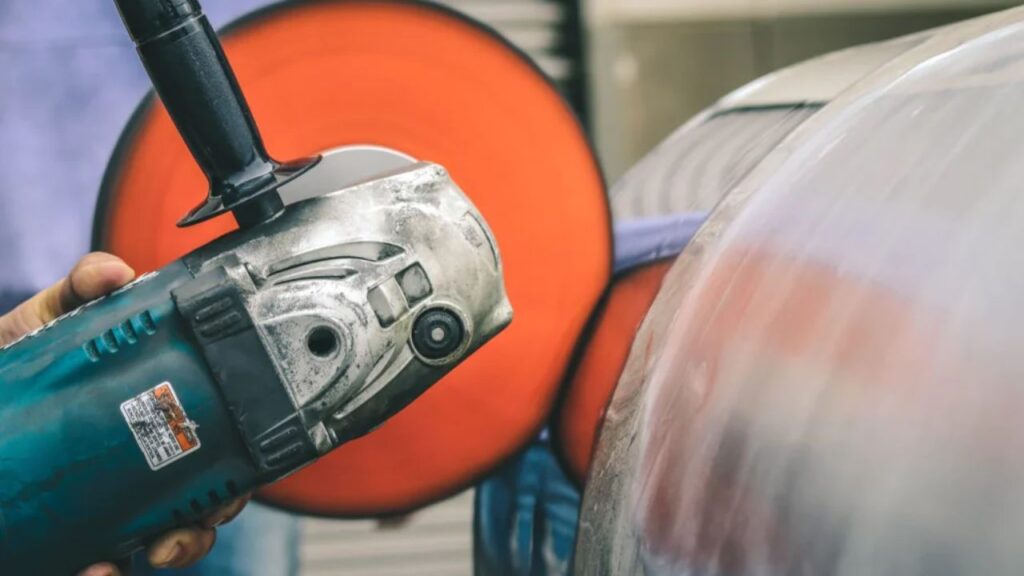
Aluminum CNC Machining
CNC machining suits well with aluminum because it is soft, strong, and easily machined. This will enable you to attain smooth surface finishes and close tolerances when using very little wear of the tool. In order to achieve the optimum:
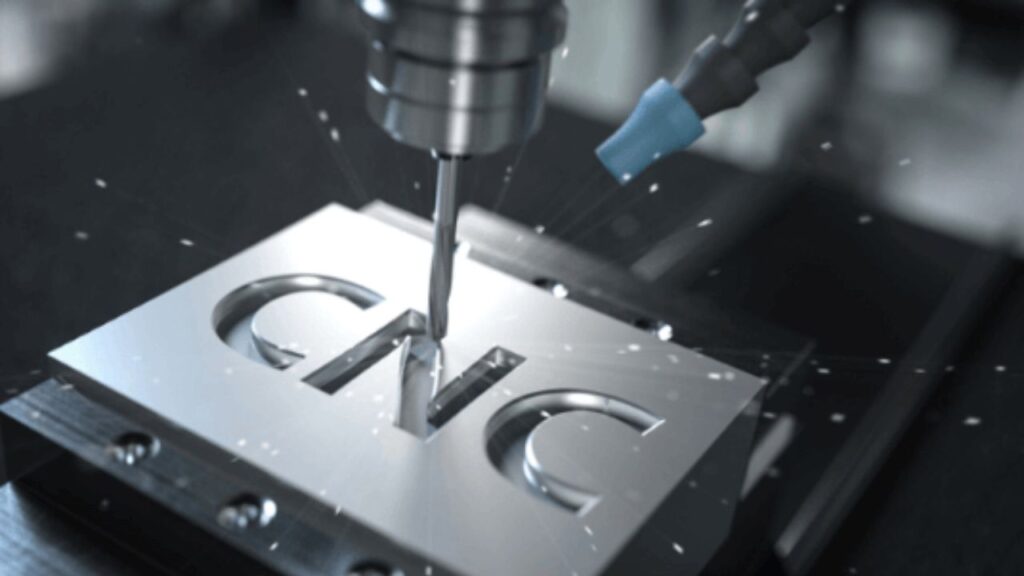
- Fast spindle speeds and moderate feed rates should be used to avoid deformation of materials.
- Use the right depth of cut to balance the accuracy and effectiveness.
- Use coolant regularly to manage heat and limit tool build up.
- Air blast or coolant flow to remove chips as fast as possible to prevent recutting.
- Use multi-axis CNC machines to manufacture highly precise and complex parts in aluminum.
- Streamline the tool paths in order to reduce the cycle time, enhance the surface finish and minimize machine wear.
Swiss Machining CNC
Small and complicated aluminum parts should be machined using CNC Swiss. Tight tolerances can be obtained using this technique. Use precision with sliding headstock lathes. Use uniform lubrication to minimize friction. This allows it to operate smoothly and be very accurate. You will manufacture intricate parts in an efficient way.
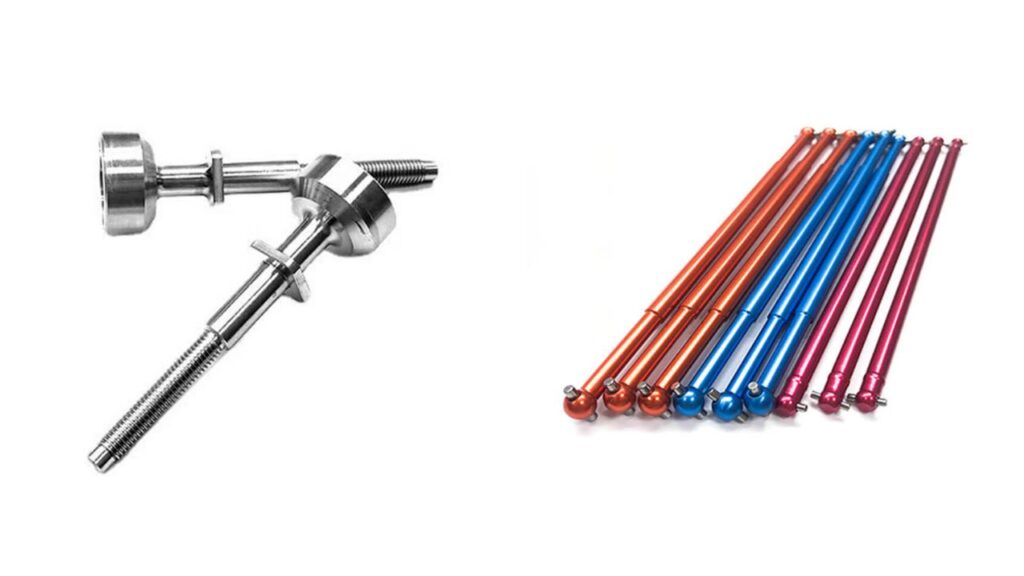
CNC Mill and Turn
Incorporate milling and turning CNC mill-and-turn machining. You are able to make complicated parts in one set up. Mult-axis machines are versatile. Select the right tools to work on aluminum. The approach is time-saving and increases accuracy. This will make production easier.
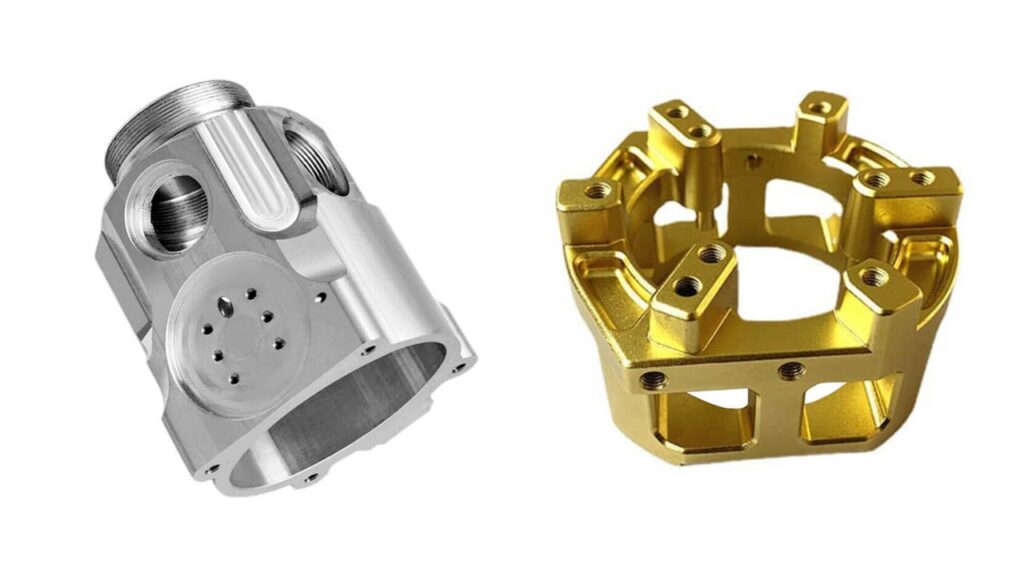
The Basic Tools and Equipment to Aluminum Machining
You require the proper equipment and tools to work with aluminum effectively as it requires specific tools that suit its characteristics. This is what you must apply:
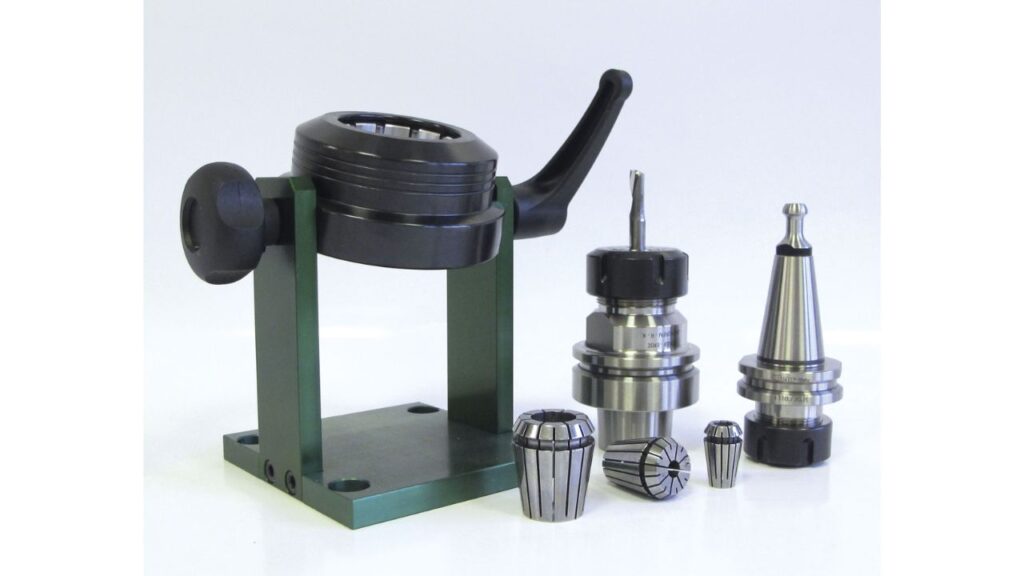
- Carbide tools are best suited in aluminum because they are hard and resist heat. Apply them instead of HSS tools to achieve increased cutting speeds.
- End mills and face mills allow you to surface and shape parts.
- Inserts and holders allow you to switch tools fast, and hold tight tolerances.
- Tool coatings such as TiN, TiAlN or DLC decrease friction and increase tool life.
- Proper coolants and lubricants should be used to manage heat, and prevent chip welding.
- Be sure to put in chip evacuation systems to prevent clogging and overheating.
Admissible Feed Rate and Speed
Aluminum needs moderate speeds and feed rates to enhance cutting and avoid heat buildup. An example of that is turning speeds of approximately 300-400 SFM with a feed rate of 0.1 to 0.2 mm/rev are effective in reducing friction and tool wear. Other recommended parameters include the following.
| Process | Speed (SFM) | Feed Rate (mm/rev) |
| Turning | 300 – 400 SFM | 0.1 – 0.2 mm/rev |
| Cutting Off | 250 SFM | 0.08 mm/rev |
| Drilling | 200 SFM | 0.05 – 0.1 mm/rev (for 4.76 mm hole) 0.08 – 0.12 mm/rev (for 12.7 mm hole) |
| Reaming | ~150 SFM | 3x the drill feed rate |
| Tapping | ~150 SFM | Based on thread depth and diameter |
Admissible Aluminum Chemical and Mechanical Characteristics
| Category | Property | Value |
| Chemical Composition | Aluminum (Al) | Balance (~97.9%) |
| Magnesium (Mg) | ~1.0% | |
| Silicon (Si) | ~0.6% | |
| Iron (Fe) | ≤0.7% | |
| Copper (Cu) | ~0.28% | |
| Chromium (Cr) | ~0.20% | |
| Zinc (Zn) | ≤0.25% | |
| Titanium (Ti) | ≤0.15% | |
| Manganese (Mn) | ≤0.15% | |
| Other Elements | ≤0.05% each, ≤0.15% total | |
| Mechanical Properties | Tensile Strength | 310 – 340 MPa (T6 temper) |
| Yield Strength | 276 MPa (T6 temper) | |
| Elongation | 12% (in 50mm) | |
| Hardness | 95 HB (Brinell) | |
| Density | 2.7 g/cm³ | |
| Thermal Conductivity | 167 W/m·K at 25°C |
Aluminum Best Practices for Machining
When machining aluminum, observe the following to achieve the best results:
- Use pre-machining processes such as stress relieving to minimize cutting distortion. This assists in accuracy of dimensions and minimizes rework after machining.
- Select the best cutting speed and feed depending on the alloy and the type of tool to prevent the build-up of heat. This will make finishes easier and minimise the chances of built-up edges.
- Apply proper coolant and lubricant that will prevent chip welding and prolong tool life. Uniform cooling also reduces thermal expansion and tolerances.
- Proper tooling and chip breakers should be used to evacuate and control the shape of the chip to keep the surface quality. The chip can be managed effectively to prevent clogging and minimise tool damage.
- Check the wear of tools frequently so that you can renew inserts when they are still in time when they can influence precision. The prompt replacement enhances productivity and high quality of parts.
- Fixture your workpiece securely and minimize the vibration to prevent chatter. Constant arrangements enhance the stability of cutting and prolong the life of machines and tools.
Problems and solutions in machining aluminum
Formation of Built-up Edges
Built-up edge (BUE) occurs when aluminum adheres to the cutting tool. This impacts on surface finish and tool life. One can avoid BUE by employing well-sharpened tools and high speeds of cutting and lubrication.
Tool to Chip Welding
The softness of aluminum and its low melting point may freeze the chips to the tool. To minimize this, employ the use of lubricants such as synthetic coolants or mist systems. Select tool coatings that are low-friction and repellent to aluminum, e.g. TiB 2 or DLC.
Vibration and Chatter
Over vibration causes poor surface finish and dimensional inaccuracy. The chatter can be reduced through proper part securing, rigid fixturing and damped tool holders. Shortening of overhang length is also beneficial.
Heat Management
Aluminum has a high expansion rate under heat and this impacts on tolerances. Control cutting speed and use high-flow coolants to maintain temperatures. Tool wear and thermal distortion are also avoided by optimizing feed rates.
Surface Finishing and Post Processing Methods
After machining your aluminum piece, it is highly necessary to consider surface finishing and post-processing. These actions enhance looks, performance, and accuracy. This is what you should know.
Deburring
Sharp edges or burrs are common after machining. These are smoothed out in deburring with tools such as rotary brushes or abrasive pads. This enhances safety, fit and general finishing.
Sandblasting
Sandblasting assists you in cleaning the surface and even out a texture. It removes the slight defects and conditions the part to receive coatings. Roughness can be regulated through the media type and pressure.
Anodizing
In case you need to prioritize your corrosion resistance and color, you go anodizing. It produces an oxide coating on the aluminum surface. You can anodize either clear or dyed finishes as per your requirement.
Powder Coating
Powder coating can provide more durable finish, both visually and physically, and has better protection. You electrostatically apply a dry powder that is then cured with heat. It would be perfect when you desire color alternatives that are highly resistant to wear.
Laser Marking
Serial numbers, logos or QR codes can be etched by laser marking. It is accurate, lasting, and non-damaging to structure.
Inspection and Dimensional Verification
Check all parts prior to shipping. Check dimensional accuracy using calipers, CMMs or optical scanners. This last step makes you able to deliver quality and design standards every time.
Uses of Machined Aluminum Parts
Industries run on machined aluminum components due to their durability and flexibility. Here is a brief overview of their main uses, so that you can know what they are worth.
Aerospace and Aviation
You depend on aluminum to manufacture aerospace structural parts. Make frames of craft aircraft, wing spars, and housings out of alloys such as 7075 or 2024. They are strong in relation to their weight and therefore durable yet not heavy. Your designs take advantage of tight tolerances using precision machining.
Automotive Industry
Incarcerate aluminum in automobile components to increase efficiency. Alloys such as 6061 are used in engine blocks of machines, brackets, and suspension. You end up with lightweight components that enhance performance and gas mileage. The precision machining guarantees reliability in the case of high-stress applications, such as in engines or chassis.
Consumer Goods and Electronics
Use aluminum in electronics to control heat and looks. Make heat sinks, frames, and casing using alloys such as 6063. You provide the effective cooling of devices such as laptops or LEDs. The smooth finish of aluminum also increases consumer product attractiveness.
Medical Devices
Make medical implants and enclosures of aluminum. Precision components such as surgical instruments are made using alloys such as 6061. You are biocompatible and corrosion resistant. Machining provides the tight tolerances necessary in medical reliability.
Industrial Equipment
Aluminum machine jigs, fixtures and automation components. Heavy-duty tools can be made of alloys such as 5083. You enhance performance in production arrangements. Machinability of aluminum facilitates intricate designs to perform reliably.
Cost Factors on Aluminum Machining
The costs of aluminum machining make you better able to plan and prevent surprises. There are a number of major variables which directly influence the overall cost.
Grade Cost of Material
The grades of aluminum differ in prices. Harder alloys such as 7075 or 7050 are more expensive than more common 6061 or 5052 alloys. Select what you actually require.
Tooling and machine time
The more involved the part, the more it remains on the machine. You will also need good equipment to cut aluminum accurately and this is a cost.
Work and Complexity
Complicated components need experienced machinists and extensive set up. The complex your design, the more the labor costs.
Finishing Requirements
Finishing touches such as anodizing, polishing or powder coating make it more expensive. In your early budget estimates, you should incorporate finishing.
Quantity and Batch Size
High quantities tend to lower the costs per part. When you have a small run, it will be more expensive because of the set up and the tooling time.
Tips to Reduce Cost and Improve Efficiency
You must employ intelligent techniques in order to minimize the costs and maximize efficiency in aluminum machining. Pay attention to more efficient and effective processes that enhance production and reduce wastes. This is what you can do:
- Design for manufacturability (DFM): Minimize part designs to lower their complexity and machining time.
- Toolpath simulation: Simulation of toolpaths can be done using CAM software to make adjustments prior to production. This saves you mistakes and wastage of materials.
- Set the correct cutting parameters: Adjust the correct speed, feed, and depth to prolong tool life and enhance cycle time.
- Use bulk machining and automation: Batch production reduces set up times and improves throughput.
- Carry out preventive maintenance: Constantly maintain your machines to prevent failure and ensure good performance.
Selecting the Right Manufacturer or Machining Service
Choosing an appropriate manufacturer of aluminum machining has direct influence on the cost and quality of your parts. The following should be taken into consideration in order to make the best decision:
- Conduct experience tests with different grades of aluminum to make sure they will support your needs.
- Check other certifications such as ISO 9001 or AS9100. These depict quality management and industry compliance.
- Check equipment and technology. Improved precision and speed are provided by modern CNC machines and advanced tooling.
- Inquire about quality control measures. You require recurrent inspection, examination, and documentation.
- Assess turnaround and support. Effective communication and delivery make your project successful.
Conclusion
In the manufacturing sector, aluminum machining is critical in the production of exact, long-lasting and lightweight parts. By combining the correct grade of aluminum with the appropriate CNC machining process, you increase efficiency and quality of the product. Machined aluminum is exceptionally versatile, whether used in aerospace, electronics or in other applications. In order to achieve optimal results, it is worth paying attention to the appropriate tools, optimized parameters, and finishing techniques. It also matters a lot to select an experienced machining service. You will be able to save money, increase precision, and make all your aluminum pieces fit your specifications perfectly with the right approach.
FAQs
Which aluminum alloy is preferable to CNC machining?
When precision and speed are required, 6061 and 2011 are some of the finest aluminum alloys to CNC machine. 6061 is very easy to machine, strong, and resistant to corrosion and weldable, and is perfect for general-purpose parts. When you need high speed and complex work, choose 2011. It provides outstanding chip control and surface finish.
What are the precautions of tool wear during machining of aluminum?
You have to use sharp coated carbide tools to minimize tool wear. Continue using high cutting speeds and moderate feeds. Heat buildup must be avoided at all times with the use of proper lubrication. In case of chip adhesion to the tool, then use a tool with a smoother coating such as TiAlN or DLC.
What are the benefits of aluminum as compared to steel in machining?
Aluminum is very readily machined compared to steel. It is less heavy, creates less cutting power, and does not wear out tools so fast. You will also have improved finishes and reduced machining time. This implies less expenses and quicker production.
What are the best surface finishing on aluminum parts?
Anodizing is one of the best options in terms of durability and appearance. It improves color and corrosion resistance. Sandblasting can also be done to get a matte finish or polishing to get a mirror finish depending on your end-use requirements.
